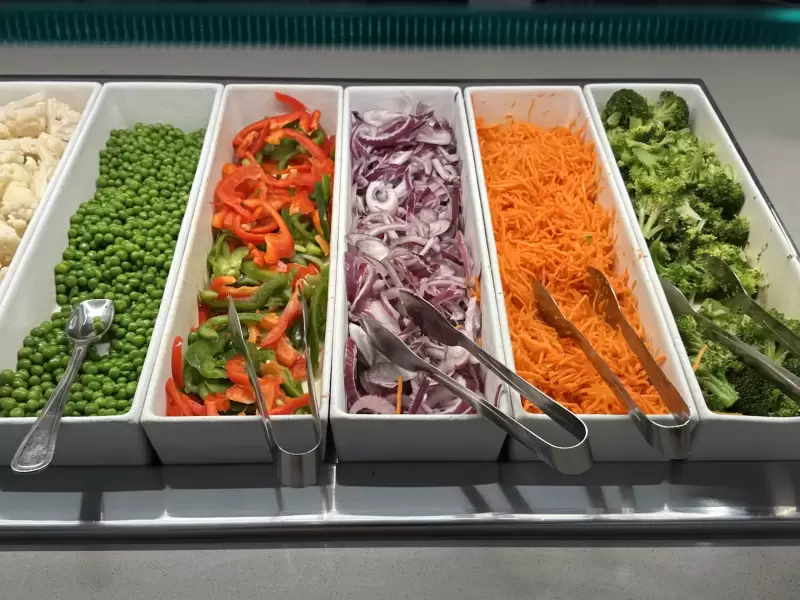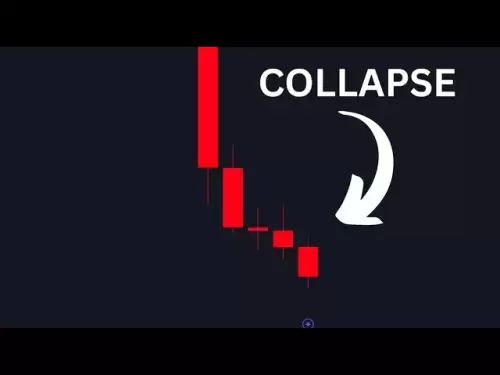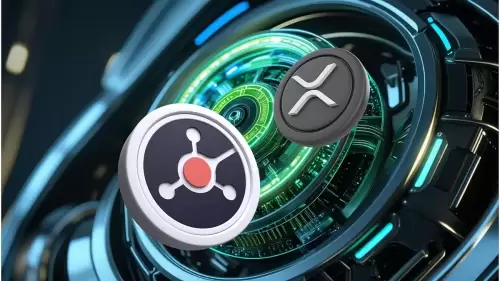 |
|
 |
|
 |
|
 |
|
 |
|
 |
|
 |
|
 |
|
 |
|
 |
|
 |
|
 |
|
 |
|
 |
|
 |
|
Cryptocurrency News Articles
U Dining Services has found the recipe for a greener campus
Apr 18, 2025 at 01:34 am
Dining Services begins its sustainability efforts by actively partnering with companies that emphasize sustainable farming, ethical labor practices, and eco-friendly packaging.

The University of Utah Dining Services is rolling up its sleeves and getting "sticky" with a comprehensive sustainability initiative that ranges from reducing food waste and boosting composting and recycling to sourcing ingredients from local and environmentally conscious suppliers.
These values are cascaded across the 10 dining locations and catering operations on campus.
“We work closely with our robust procurement teams to source our ingredients from reliable partners that align with our overall as well as campus’ goals of sustainability efforts,” said Ken Ohlinger, campus executive chef for U Dining Services.
“We have a strong sustainability purchasing policy that includes sourcing fresh yogurt and milk that is free of artificial growth hormones, only sourcing certified humane cage-free eggs, seafood that is approved and adheres to the Monterey Bay Aquarium Seafood Watch, poultry raised and produced without the routine use of human antibiotics and more.”
To further cut emissions and support the regional economy, Dining Services is increasingly sourcing ingredients from within Utah.
Charlie’s Produce helps U Dining Services buy from a variety of local farms and the campus dining team also works with Cherry Hill Farms, Bangerter Farms, Central Milling Co., and Slide Ridge Honey for flour and specialty items produced in the area. “We continuously rotate local farms based on seasonal items,” Ohlinger said.
Wasatch Meats supplies halal chicken, specialty fish, and pork products, while Stone Ground Bakery and The Bagel Project deliver freshly baked goods to campus kitchens.
Once ingredients arrive, the culinary team maximizes their use through creative repurposing. Cheese trimmings go into mac & cheese sauces, raw produce becomes ready-made salads, and leftover bread is transformed into croutons or breadcrumbs.
“Some other examples of how we reuse products include reusing pineapple turns into tepache as an aqua fresca in the dining halls and using our vegetable trimmings and chicken bones in stocks for many of our soup bases,” Ohlinger said.
Despite these efficiencies, operating large-scale food services still generates waste. To tackle this, U Dining Services adopted WasteNot 2.0—a program that allows kitchen managers to monitor and minimize daily food waste.
“This helps us track our waste daily and allows us to set targets to minimize the amount of waste we generate each day,” Ohlinger explained.
During a typical month of dining service at Urban Bytes at Kahlert Village, United Table at Heritage Center, Miller Cafe at Lassonde, Caroline’s Kitchen at Gardner Commons, the Food Court, Crimson View, the Epicenter Cafe, and within catering, U Dining Services averages approximately 225 pounds of organic green waste per day—which includes trimmings and peelings of fruits and vegetables and items that can’t be repurposed such as bones, meat fats, onion peels, eggshells, etc.
Partnering with Momentum Recycling for the past eight years, U Dining Services diverts compostable material from the dining halls to be composed in Park City or to Wasatch Resource Recovery to feed energy back into the power grid (some of that energy comes back to the U, while most of it goes to North Salt Lake).
Working with the U of U Facilities Team, campus dining also recycles cardboard and is looking into expanding recycling to glass and plastics.
In an effort to decrease the amount of red waste—avoidable overproduction and production waste—U Dining Services offers made-to-order dishes ordered through a QR system called Tavlo. Wait times for items are displayed both on the app and on screens in the dining areas to help diners make decisions about what to eat at any moment in time.
“Students not only get the advantage of enjoying a fresh and customized made-to-grade plate, but it also reduces our food waste by minimizing ingredients being used at a time,” Ohlinger said. “Rather than batch-cooking massive quantities of food and serving them on a buffet line, the QR code option allows dishes to be made on the spot, using only what is necessary, while delivering fresh high-quality meals. We continually seek ways to minimize production waste and responsibly manage our resources.”
Students who need meals on the go can participate in the reusable “To-Go Box” program. By using one meal swipe, they can fill a green to-go container, enjoy their meal elsewhere, and return the box for a sanitized replacement or hold a virtual token for later use.
“They have 30 minutes to fill their container, and the box must be able to fully close,” Ohlinger said. “When students are ready for their next to-go meal, they can bring back their used empty container to exchange it for a new sanitized one, or they can collect a virtual token through the app to hang onto until they are ready for their next to-go meal.”
At the end of the day, U Dining Services ensures that excess food supports those in need across the city. Some goes to the U’s campus food pantry located in the Union as well as the student-run Food Recovery Network, which connects with local food banks for food donations; as well
Disclaimer:info@kdj.com
The information provided is not trading advice. kdj.com does not assume any responsibility for any investments made based on the information provided in this article. Cryptocurrencies are highly volatile and it is highly recommended that you invest with caution after thorough research!
If you believe that the content used on this website infringes your copyright, please contact us immediately (info@kdj.com) and we will delete it promptly.


























































